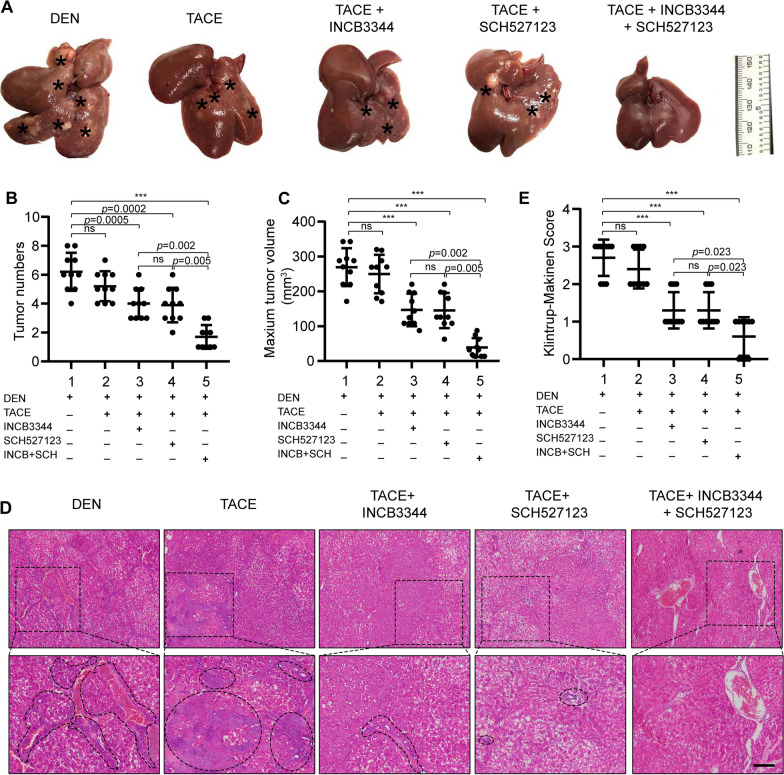Fig. 5.
Blockade of CCL2/CCR2 and CXCL1/CXCR2 enhances the antitumor effect of TACE in the HCC model. A Sprague Dawley rats were treated with diethylnitrosamine for 14 weeks, then subjected to the modified TACE procedure. The chemotherapeutic drug cisplatin (3 mg/kg body weight) was administered to the TACE-treated rats with or without the CCR2 antagonist INCB3344 (60 μg/g body weight) and the CXCR2 antagonist SCH527123 (10 μg/g body weight). Control animals received the TACE procedure and administered 0.5 ml normal saline. Representative images of rat livers from the indicated treatment groups are shown. Typical tumor nodes are indicated by the asterisks (n = 10/group). B The number of HCC nodules per liver. Data are presented as mean ± SD. ns, not statistically significant, ***p < 0.001. C The maximum tumor volume per liver. Data are presented as mean ± SD. ns, not statistically significant, ***p < 0.001. D Hematoxylin and eosin H, E staining was employed to observe the histological structure of the liver in the indicated groups. Black asterisks represent accumulation of inflammatory cells. Scale bar, 200 μm. E The Klintrup-Makinen score was determined to assess the level of local inflammatory cell infiltration. Data are presented as mean ± SD. ns not statistically significant, ***p < 0.001

